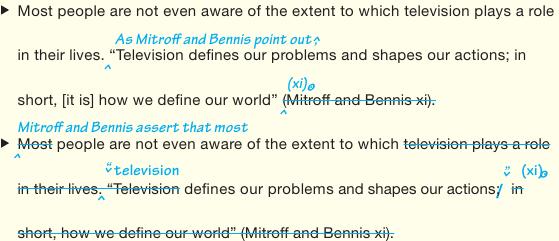E6-a Integrate direct quotations into sentences responsibly and correctly.
E6-a Integrate direct quotations into sentences responsibly and correctly.
direct quotation A speaker’s or writer’s exact words, which are enclosed in quotation marks.
Writers often introduce quotations by mentioning the name of the person being quoted. Although says and states are acceptable, consider using more precise verbs and phrases that establish logical connections and provide variety. Examples include agrees, asserts, charges, claims, confirms, discusses, emphasizes, and suggests.
- As American Motors President M. Paul Tippitt asserts, “The cardinal rule of the new ballgame is change” (Sobel 259).
Readers expect quotations and text to fit gracefully so that the writer’s ideas and the material from supporting sources are both distinct and coherent. (See also E2-d.)
Cite a source smoothly, guiding readers from text to quotation.
Identifying the author of your source in the main part of your sentence often supplies the context and transition a reader needs.
For more on integrating source information in an academic essay, see Chapter 26; for more on citing and documenting sources, see Chapters 27 (MLA) and 28 (APA).

Carefully select the text that introduces or integrates the quotation, as well as the exact words you are quoting.
